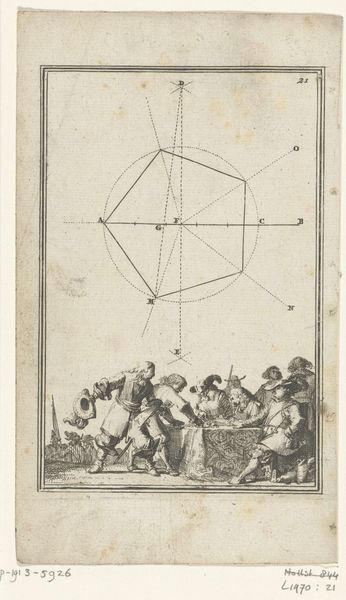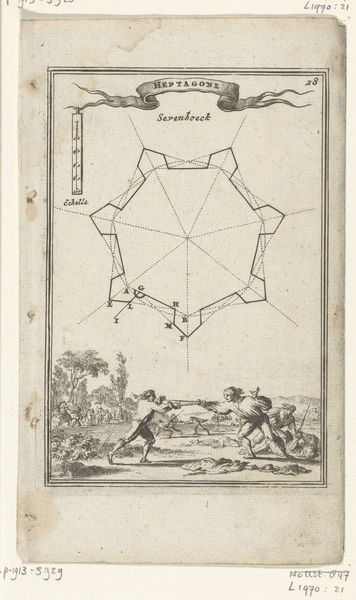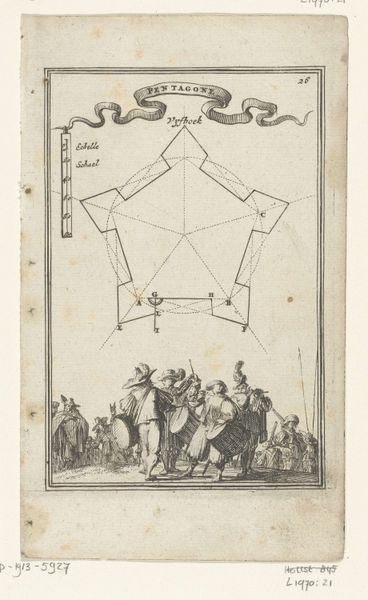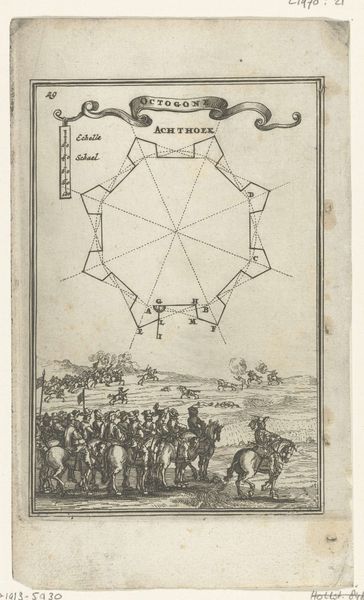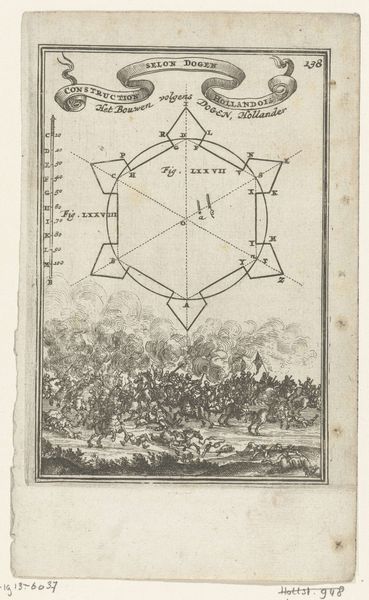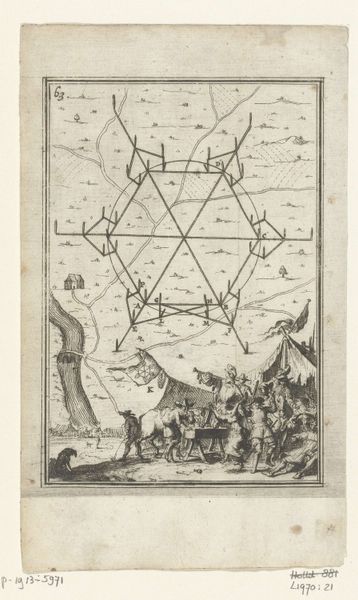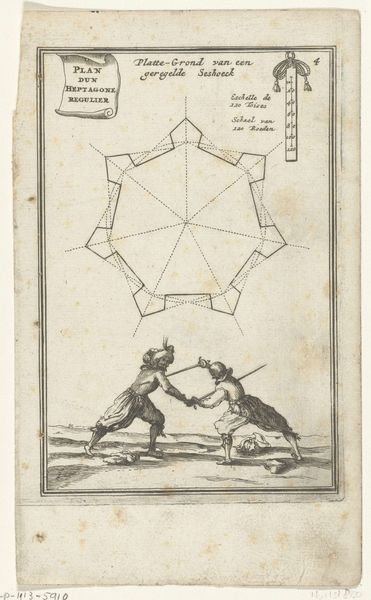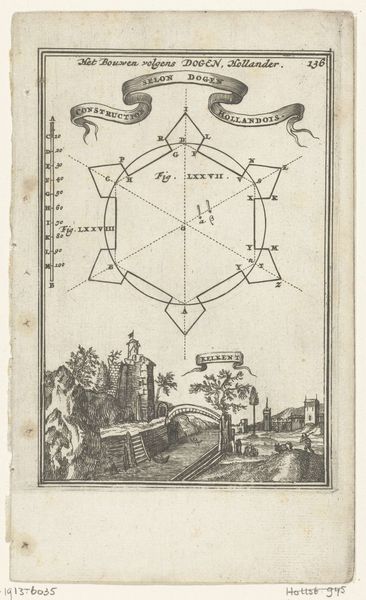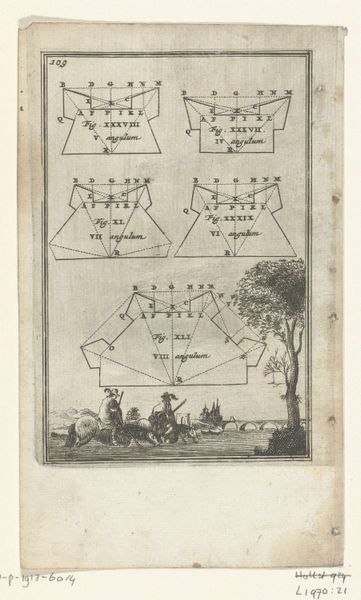
Illustratie voor 'Den Arbeid van Mars' van Allain Manesson Mallet 1672
0:00
0:00
romeyndehooghe
Rijksmuseum
drawing, print, engraving
#
drawing
#
baroque
# print
#
figuration
#
geometric
#
line
#
history-painting
#
engraving
Dimensions: height 185 mm, width 111 mm
Copyright: Rijks Museum: Open Domain
Curator: Today we’re looking at an engraving, a 1672 print by Romeyn de Hooghe titled "Illustration for 'The Labours of Mars' by Allain Manesson Mallet,” held here at the Rijksmuseum. Editor: It's wonderfully peculiar! The top half feels so precise and mathematical, but then the bottom is this chaotic skirmish, all rendered in these tiny, energetic lines. Like blueprints for a battle. Curator: Exactly! It’s part of a larger publication detailing military engineering. De Hooghe combines a precise geometric plan—showing the construction of a bastion—with an illustrative scene depicting soldiers. Note the contrast: idealized form versus the messy reality of warfare. Editor: It makes you wonder, doesn’t it? Is de Hooghe celebrating the science of war, or subtly commenting on the disconnect between theory and practice? The soldiers at the bottom seem less 'laborious' and more... miserable. Are those even tents they’re huddled behind? Curator: That tension is central to its meaning. The crisp lines and rational design of the bastion represent control, order, the application of reason to conflict. Semiotically, the lines serve as signifiers of human mastery. Editor: And yet, those lines also contain and constrict. There’s something deeply unsettling about turning human conflict into geometry. All that precise measuring and calculation...for what? More destruction. It's almost darkly comical. Curator: I find your reading compelling. It speaks to a Baroque sensibility, that contrast of clarity and chaos, the idealized and the mundane. Even the medium itself—engraving—emphasizes this dichotomy, demanding precision but allowing for expressive detail. Editor: Thinking about it now, I realize it makes you see things differently – that sometimes the rigid plans of the generals are futile against human error or the chaos of chance. In that sense, perhaps, the artist gives precedence to humankind over warfare technology. Curator: A resonant note upon which to conclude our analysis. De Hooghe presents us with more than just an illustration; he delivers a meditation on war, science, and humanity.
Comments
No comments
Be the first to comment and join the conversation on the ultimate creative platform.
